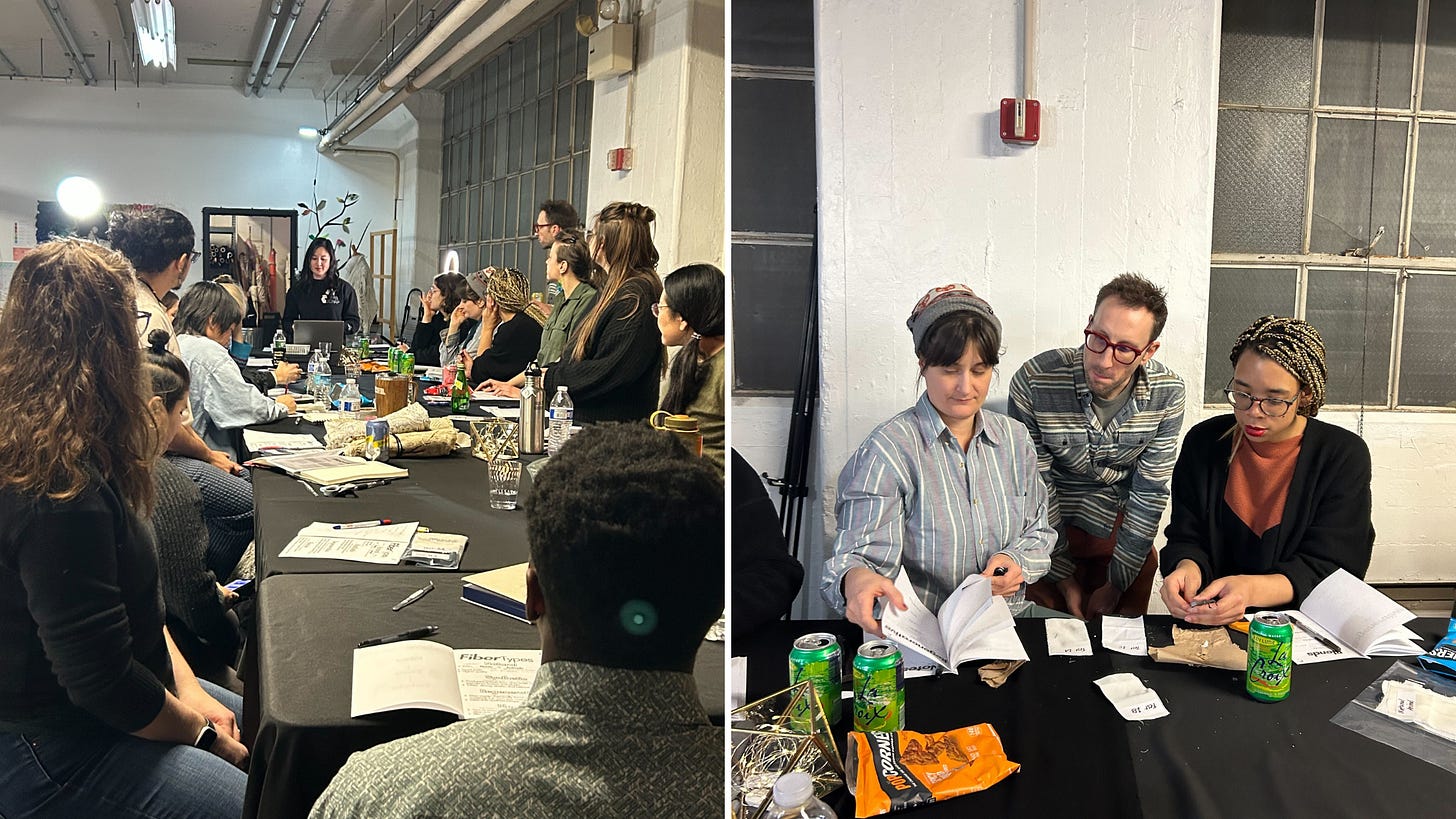What's the Different Between Fiber and Fabric?
January Workshop Recap: Key takeaways, additional resources, and what's next!
Monday night, despite snow and plunging temperatures, our FAB community showed up at our Brooklyn Warehouse for our FIRST workshop of 2025!
An absolutely fantastic group of creatives, friends, FABSCRAP-first-timers, and long-time supporters came through our doors to learn more about fabric. The energy they brought? UNMATCHED. Seriously, I can’t stress that enough. As I checked people in, I did a little happy dance with at least five—maybe six?—different attendees, cheering, “First FAB workshop of 2025!” (jazz hands were involved). The excitement only grew as they grabbed seats at our volunteer stations, which we had transformed into communal tables (gamechanger, by the way). Honestly, I could keep rambling about the vibes from the night, but you really need to experience it for yourself!
Here’s a recap of the event, with resources and highlights—whether you joined us in person or are catching up now (hi!).

*Workshop goals:
Gain a better understanding of fabric content basics
Learn fiber identifying practices to distinguish natural, synthetic, and blended fibers while gaining a better understanding of their unique properties
Start an “Identifying Fabric Journal”
For the workshop, we created “Fabric Journals” for all attendees (and are available below). Each journal was thoughtfully designed to keep information easily absorbable and accessible. Some pages shared all the key information upfront, so attendees could stay in the moment without worrying about taking notes. Other pages provided the organization for jotting down notes and capturing everything from the discussions and demonstrations.
*With the journal as our guide, we started with the basics:
Fiber is the raw material—like cotton, silk, or polyester—but fabric is created when those fibers are woven or knit together in a specific pattern. That’s why the same fiber can make fabrics as different as cozy flannel and sleek satin. Pretty cool, right? Understanding this can totally change the way you think about your clothes!
*There are 4 [main] types of fiber:
As Camille said during the workshop, “every fiber has pros and cons.”
Keep reading with a 7-day free trial
Subscribe to Better Together Substack to keep reading this post and get 7 days of free access to the full post archives.




